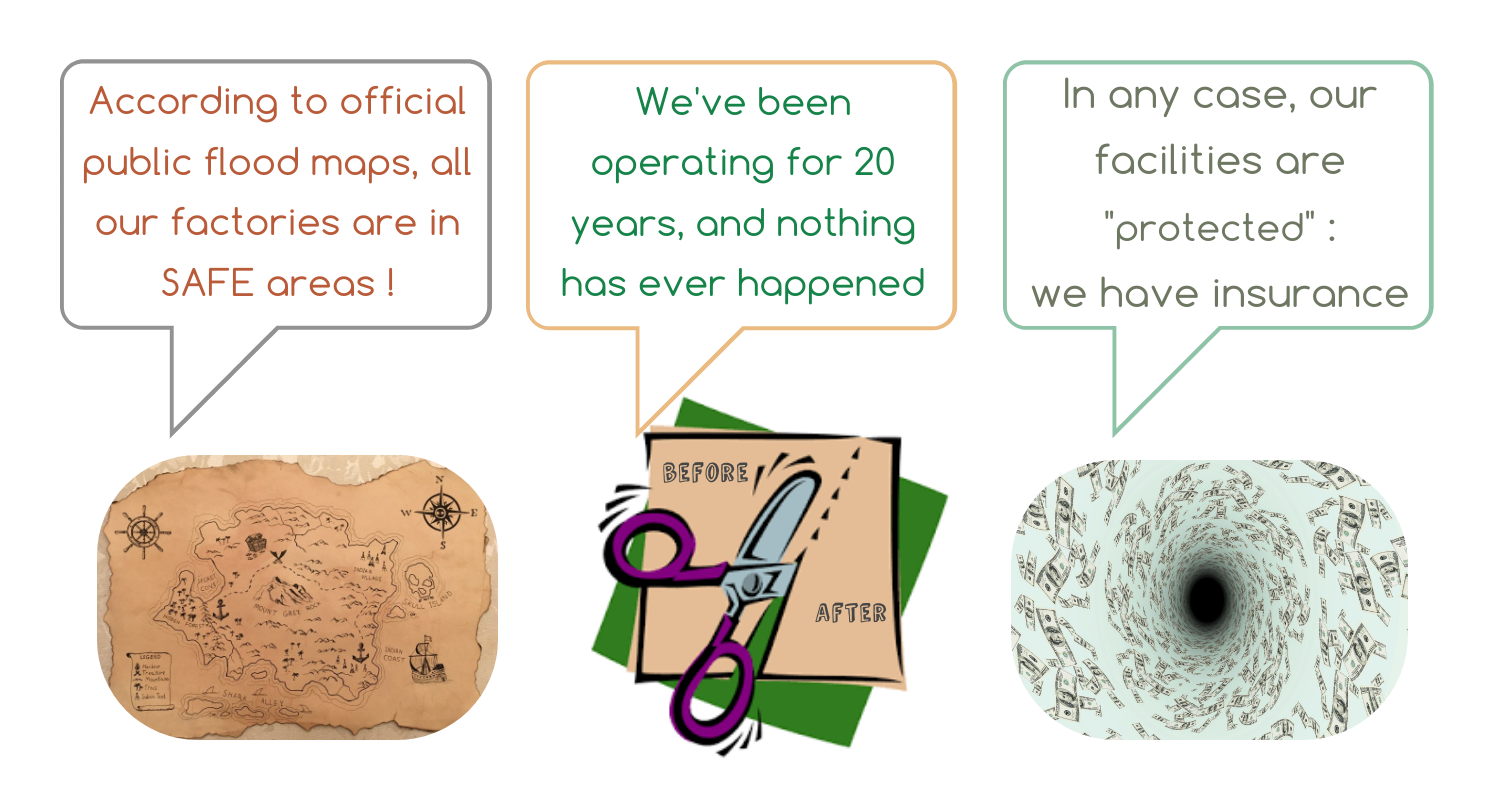
Flood and Wildfire Insurance: can we really call it "Protection"?
June 15, 2025
Did you know this?
-
Insurance contracts are typically valid for just one year.
-
Flood and wildfire insurance policies are regularly reviewed and may not be renewed over the lifetime of your facility.
-
Having flood insurance does not mean any of that your premiums (insurrance budgets) are ever invested in flood defenses or safety infrastructure.
Indeed, a valid question could be: where does the money actually go? -
Flood insurance is only a form of short-term, partial financial hedging.
-
Financial hedging is not an investment in resilience and does not reduce physical exposure to floods.
-
Insurance is not protection — it is a financial product, not a safeguard.
-
Each year, 25–45% of all flood damages occur in areas officially classified as “safe.”
-
In developed countries, 92% of flooded factories and farms over the past 20 years were located in zones considered "safe" on official public flood maps.
-
In many lower-income countries, there are no such insurance statistics — because there is no flood and wildfire insurance.
About public flood maps:
-
Official public flood maps are rarely, if ever, updated.
-
Most often, only the date of the update changes, not the actual data, like a 20-year-old milk bottle with a “fresh” label.
-
These maps are based only on limited observational data, often from a very short historical period.
-
They do not include any projections or insights from climate models.
-
As a result, public maps miss up to half of all flood-prone zones.
-
Insurers do not rely on public maps for risk pricing.
Instead, they use their own data, models, and thresholds. -
Insurers can refuse to renew policies or exclude "at-risk" municipalities, no matter what official maps say.
What your policy likely doesn’t cover:
-
Just because your standard (basic, minimal) insurance policy mentions floods or wildfires, that does not mean it will cover them.
In many cases, it won’t even cover 10% of the damage. -
If local authorities do not declare a state of emergency, even insured damages won’t be compensated.
-
Standard insurance typically covers only the walls of a building.
-
It does not cover:
-
Machinery or equipment
-
Production losses
-
Business interruptions or delays
-
Asset devaluation after flood damage
-
Loss of market share due to downtime
-
Without detailed climate risk analysis, reliance on insurance coverage or official flood zone designations may result in significant underestimation of actual risk. Preparedness depends on awareness. Effective risk mitigation strategies must be planned well in advance, they cannot be deployed at the last minute.